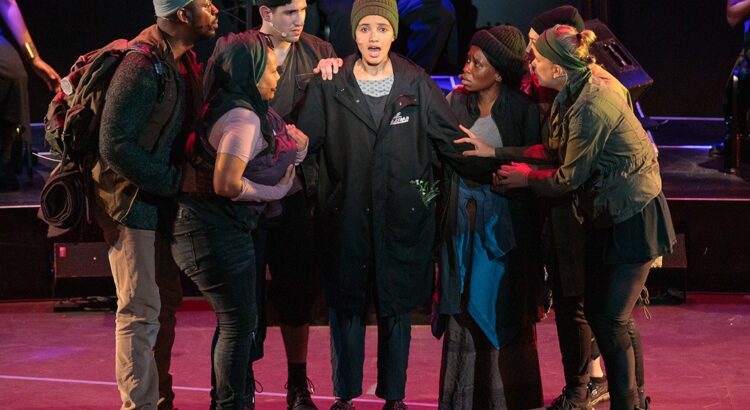The Duderstadt Center presents a gallery showcasing the talent of select BFA Design and Production students. Within this immersive exhibition, visitors encounter an array of displays from students from many disciplines in the D&P major. This multifaceted degree program includes stage management, lighting design, set design, prop masters, and costume design, and while many specialize, some students take on multiple facets of theater production.
There are many essential assets to creating theater beyond actors and directors. The D&P students take on an immeasurable amount of creative liberty and manual labor work for theatrical productions and oftentimes will go unnoticed.
 Each student brings their own flare to the gallery, creating individualized and quite elaborate portfolio presentations. They feature work from all sorts of productions around campus, including directing student’s senior thesis, University Productions, and work from student theater organizations. If you tend to frequent SMTD performances much of their work has been featured here in real life.
Each student brings their own flare to the gallery, creating individualized and quite elaborate portfolio presentations. They feature work from all sorts of productions around campus, including directing student’s senior thesis, University Productions, and work from student theater organizations. If you tend to frequent SMTD performances much of their work has been featured here in real life.
To the left, we have Esther Hwang‘s meticulously curated stage management portfolio. The collection is complete with binders of her stage management work (schedules, daily calls, cues.. and more!) her resume, business cards, and performance photos, all beautifully organized for your viewing convenience. It is clear Hwang’s attention to detail is extraordinary—the exhibit is brilliantly organized and thoughtful while revealing many aspects of stage management I was unaware of!
To the right are Ethan Hoffman’s lighting portfolio and Kayti Sanchez’s costume design and construction portfolios. Hoffman presents a comprehensive variety of the many positions he has held at Michigan. In addition to lighting design, he has experience in associate producing and electrician positions. His portfolio presents a keen eye for captivating lighting schemes. With a blend of precision and creativity, Sanchez shares her costuming work along with set designs and a thematic object presentation. Her portfolio was a testament to her original artistic vision and professionalism.
It was inspiring to see the innovative artistry and dedication of those ‘behind the stage’. Each portfolio is truly unique—you must see them for yourself! The gallery will be available to view until February 10th in the Duderstadt Center. More information here.
Image thanks to Univeristy of Michigan SMTD.



